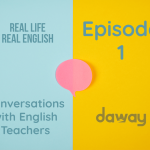Conditional structures are a cornerstone of English grammar, offering a way to express possibilities, hypotheses, and outcomes. For English learners, understanding and using conditionals effectively can make your speaking more natural and engaging. In this blog post, we’ll explore what conditionals are, their types, and practical tips for using them in conversations.
What Are Conditional Structures?
Conditional structures, often called "if-clauses," are sentences that describe a condition and its result. They typically consist of two parts:
- The if-clause, which states the condition.
- The main clause, which explains the result or outcome if the condition is met.
For example:
- If it rains, we will stay indoors.
In this sentence, "If it rains" is the condition, and "we will stay indoors" is the result.
Types of Conditional Structures
There are four main types of conditionals in English, each serving a unique purpose.
1. Zero Conditional
The zero conditional is used for general truths or facts that are always true:
- If you heat water, it boils.
Structure:
- If + present simple, + present simple
2. First Conditional
The first conditional expresses real and possible situations in the future:
- If I finish work early, I will call you.
Structure:
- If + present simple, + will + base verb
3. Second Conditional
The second conditional describes hypothetical or unlikely situations in the present or future:
- If I won the lottery, I would travel the world.
Structure:
- If + past simple, + would + base verb
4. Third Conditional
The third conditional refers to unreal situations in the past and their imagined outcomes:
- If I had studied harder, I would have passed the exam.
Structure:
- If + past perfect, + would have + past participle
Mixed Conditionals
Sometimes, you may mix conditional structures to talk about past conditions with present results or vice versa:
- If I had taken the job, I would be living in London now.
Using Conditionals in Speaking
When speaking, conditionals can make your communication more dynamic and precise. Here are some tips to incorporate them seamlessly:
- Practice Common Scenarios: Think of everyday situations where you might use conditionals. For example:
- Making plans: If it’s sunny tomorrow, we’ll go to the park.
- Discussing possibilities: If I were you, I’d apologise.
- Use Contractions: In casual speech, contractions make conditionals sound more natural:
- If you’re free later, let’s meet up.
- I’d call you if I knew the answer.
- Add Expressions of Uncertainty: You can soften or adjust the tone of your conditionals with phrases like might, could, or should:
- If you’re not sure, you might want to ask someone.
- Engage in Role Plays: Practising role-play scenarios, such as making suggestions or giving advice, is an excellent way to build confidence with conditionals:
- If I were you, I’d talk to your manager.
- Combine with Questions: Using conditionals in questions can keep conversations flowing:
- What would you do if you had more time?
Common Pitfalls
- Mixing Tenses Incorrectly: Ensure the tenses in the if-clause and main clause match the intended meaning.
- Incorrect: If I would know, I will tell you.
- Correct: If I knew, I would tell you.
- Overusing Conditionals: Balance your use of conditionals with other sentence types to avoid sounding repetitive.
- Avoiding Conditionals Altogether: Don’t shy away from using them! Start with simple structures and gradually add complexity.
Conditionals are invaluable for expressing ideas clearly and fluently in English. By practising regularly and incorporating them into your speaking, you’ll gain confidence and sound more natural. Remember, mistakes are part of the learning journey—so don’t be afraid to experiment!
Download the worksheet for some practice exercises and take a look at the quiz below!
Read the sentences and fill in the gaps!
If you enjoyed reading this blog and doing the quiz then why not take a look at our range of courses for all levels? Use the code BLOG20 for a 20% discount on all courses!




